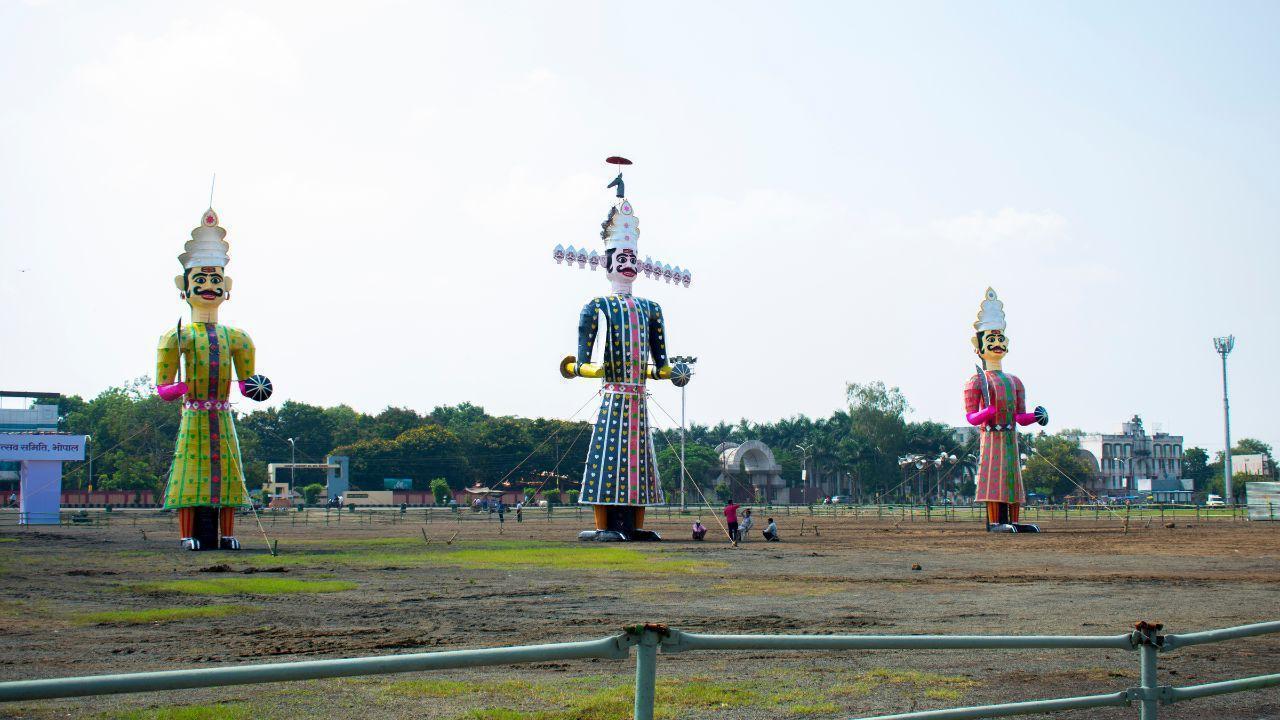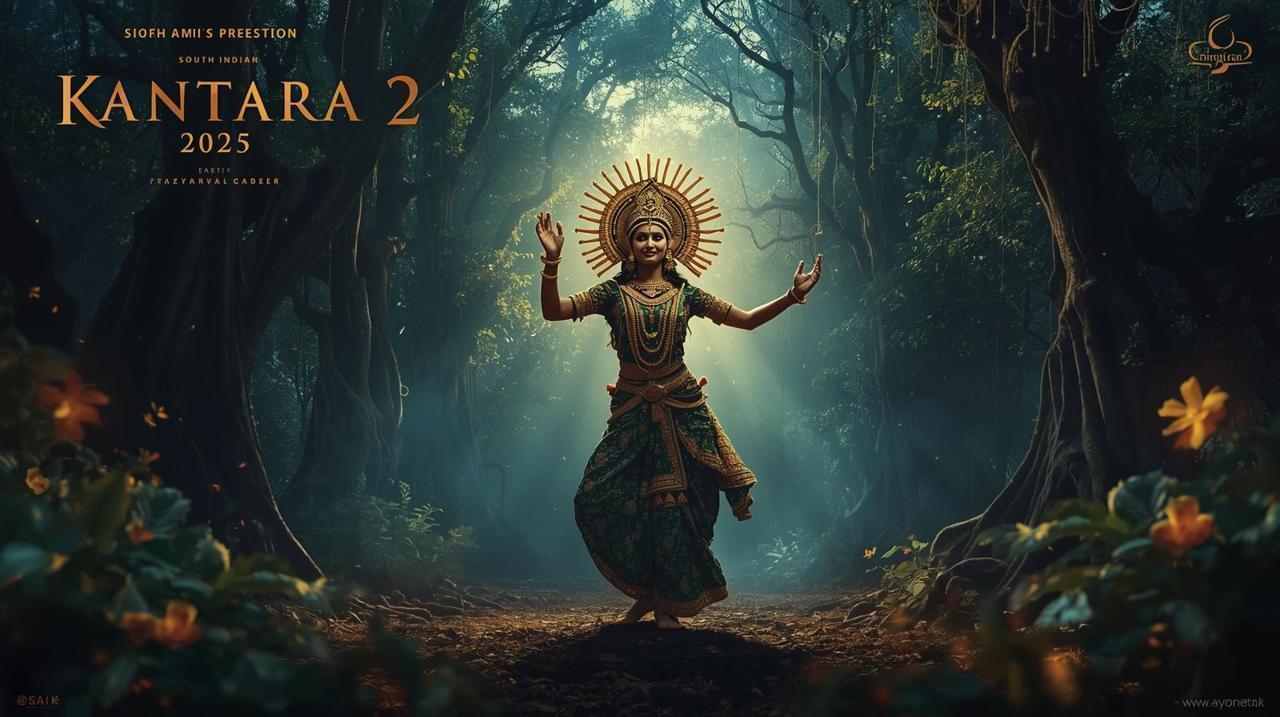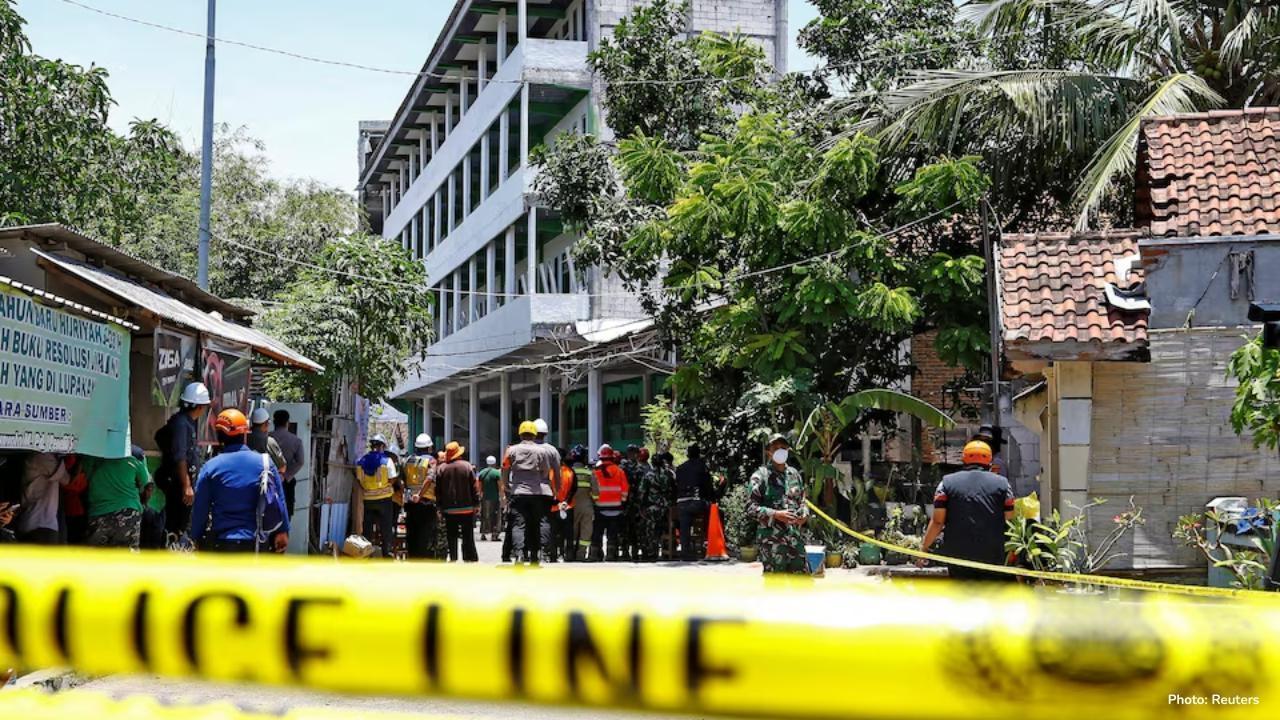
Post by : Mamta
Dussehra, also known as Vijayadashami, is one of the most celebrated Hindu festivals across India. It marks the victory of Lord Rama over the demon king Ravana, symbolizing the triumph of good over evil. Among the many rituals performed during this festival, Ravan Dahan—the burning of towering effigies of Ravana, along with his brother Kumbhkaran and son Meghnath—remains the highlight of the celebration. This fiery spectacle not only entertains but also holds deep cultural, spiritual, and social significance.
The roots of Ravan Dahan lie in the epic Ramayana, where Lord Rama defeats Ravana after a fierce battle to rescue Sita. The burning effigies represent the destruction of evil forces and the restoration of dharma. For centuries, this tradition has been re-enacted through Ram Lila performances that culminate in the symbolic Ravan Dahan.
Initially performed in small villages, the practice has grown into grand public gatherings, with effigies often reaching heights of 60 to 100 feet. Over time, communities added music, fireworks, and plays, making the ritual a major cultural extravaganza.
The burning of Ravana signifies the eternal victory of righteousness over wickedness. It serves as a reminder that evil, no matter how powerful, cannot prevail against truth and virtue.
Ravana is not just seen as an external demon but also as a representation of inner vices—lust, anger, greed, pride, jealousy, and ego. Ravan Dahan encourages individuals to burn these negative qualities within themselves, leading to self-purification.
In states like Uttar Pradesh, Delhi, and Punjab, Ravan Dahan is celebrated on a massive scale with Ram Lila performances, fireworks, and large crowds gathering at grounds to witness the burning of effigies.
While South India emphasizes the worship of Goddess Durga during Navratri, some regions also conduct symbolic Ravan Dahan, merging traditions with local beliefs.
Indian communities abroad, particularly in countries like the USA, Canada, and the UK, organize Ravan Dahan events, keeping the tradition alive across borders and strengthening cultural identity.
Ravan Dahan acts as a unifying force, bringing together people from diverse backgrounds to participate in festivities. It promotes social harmony and collective celebration.
The Ram Lila performances leading up to Ravan Dahan preserve traditional storytelling, folk music, and drama, ensuring that cultural heritage is passed on to future generations.
With growing environmental concerns, many communities now opt for eco-friendly effigies made of biodegradable materials instead of plastic or synthetic items. This ensures celebrations remain joyful without harming nature.
Live telecasts, digital storytelling, and social media platforms have amplified the reach of Ravan Dahan, enabling millions to experience the celebrations virtually.
The ritual teaches timeless values such as honesty, courage, humility, and the importance of standing up against injustice.
In a fast-paced modern world, Ravan Dahan serves as a reminder to look within and overcome inner demons, ensuring personal growth and emotional balance.
Q1. Why do we burn Ravana’s effigy during Dussehra?
Burning Ravana’s effigy symbolizes the destruction of evil and the triumph of righteousness as depicted in the Ramayana.
Q2. What do Ravana’s ten heads represent?
They represent negative human traits such as ego, greed, anger, and attachment that one must overcome.
Q3. Is Ravan Dahan celebrated everywhere in India?
While it is grandly celebrated in North India, some regions focus more on Durga Puja during Dussehra.
Q4. How tall are Ravana effigies?
Effigies can range from 20 feet to over 100 feet, depending on the scale of the celebration.
Q5. Are there eco-friendly alternatives to Ravan Dahan?
Yes, communities are adopting biodegradable materials and minimizing fireworks to make the festival environmentally friendly.
Q6. How is Ravan Dahan relevant in today’s times?
It reminds people to overcome inner negativity and promote values of truth, justice, and compassion.
Ravan Dahan is not just a ritual but a profound cultural and spiritual practice that continues to inspire generations. It embodies the timeless message of righteousness prevailing over evil, while also reminding us to conquer our inner flaws. As communities adapt celebrations to be more eco-friendly and inclusive, the essence of Ravan Dahan remains unchanged—celebrating the eternal triumph of good over evil.
Ravan Dahan, Dussehra 2025, Burning of Ravana, Ram Lila










AI Startup Valuations Spark Concerns of Market Bubble Amid Funding Surge
AI startups are attracting record investments, but experts warn that inflated valuations may signal

Ambulances Line Up as Indonesia Searches for Students After School Collapse
A school in East Java collapsed during afternoon prayers. Dozens of students are trapped, and rescue

Typhoon Bualoi Kills 51 in Vietnam; Banks Asked to Aid Affected Firms
Typhoon Bualoi caused heavy damage and killed 51 people in Vietnam. The central bank has urged banks

South Korea's President Urges North Korea to Resume Family Reunions
South Korean President Lee Jae Myung calls on North Korea to restart family reunions for those separ

Finnish Court Rules It Can't Prosecute Crew Over Baltic Sea Cable Damage
A Finnish court has decided it doesn't have the authority to prosecute the crew of the Eagle S oil t

Czech Republic Votes: Billionaire Babiš Promises Higher Wages, Less Support for Ukraine
In the Czech Republic's upcoming elections, billionaire Andrej Babiš's party leads with promises of